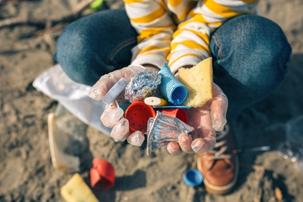This unit focuses on solid waste management and aims to develop students' understanding of different aspects of waste, including waste disposal methods, waste reduction strategies, and the 4Rs (Reduce, Reuse, Recycle, and Recover). The unit is designed to be engaging and hands-on, with a range of activities that involve experiments, data collection and analysis, critical thinking, and problem-solving.

Waste Not, Want Not
- Primary
- Year 3 - 4
- English
- Science
- Humanities and Social Sciences
- Geography
- Technology
- Design and Technologies
- Environmental
- Recycling
- Sustainability
- ...
Tune in
- Lesson
- ...
Where does it go?
- Primary
- Year 3 - 4
- English
- Humanities and Social Sciences
- Environmental
- Sustainability
Find out
- Lesson
- ...
Weighing in on lunchbox leftovers
- Primary
- Year 3 - 4
- Mathematics
- Science
- Humanities and Social Sciences
- Geography
- Lesson
- ...
Doorways To Waste
- Primary
- Year 3 - 4
- English
- Science
- Humanities and Social Sciences
- Geography
- History
- The Arts
- Lesson
- ...
Why waste it?
- Primary
- Year 3 - 4
- English
- Humanities and Social Sciences
- Environmental
- Recycling
- Lesson
- ...
Down with waste
- Primary
- Year 3 - 4
- English
- Science
- Humanities and Social Sciences
- Geography
- Environmental
- Recycling
Take action
Save
Share this lesson
Copy Link
Copied
Share
Welcome back!
Don't have an account yet?
Log in with:
By signing up to Cool.org you consent and agree to Cool's privacy policy to
store, manage and process your personal information. To read more, please see
our privacy policy here(Opens in new tab).
Create your free Cool.org account.
Many of our resources are free, with an option to upgrade to Cool+ for premium content.
Already have an account?
Sign up with:
By signing up to Cool.org you consent and agree to Cool's privacy policy to
store, manage and process your personal information. To read more, please see
our privacy policy here(Opens in new tab).